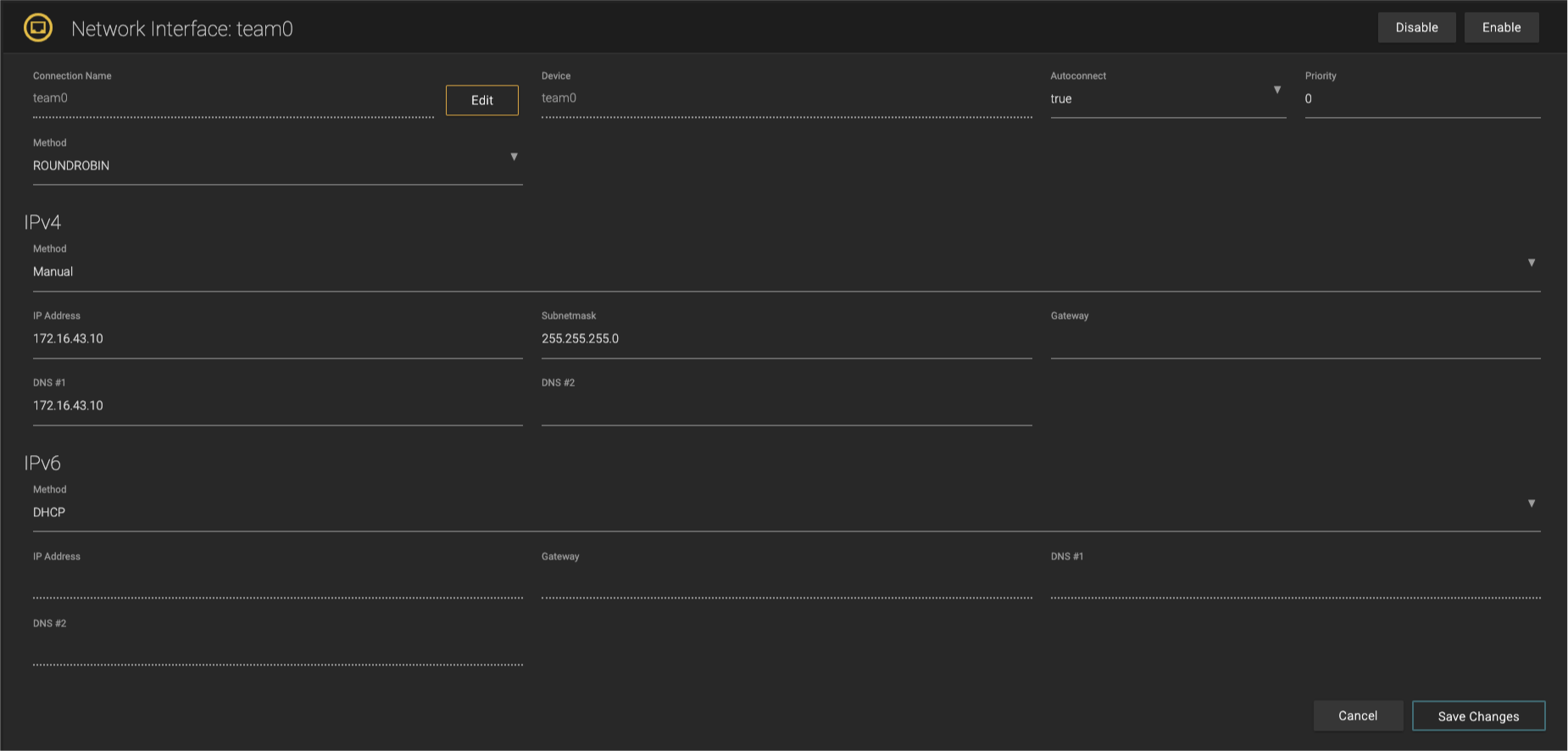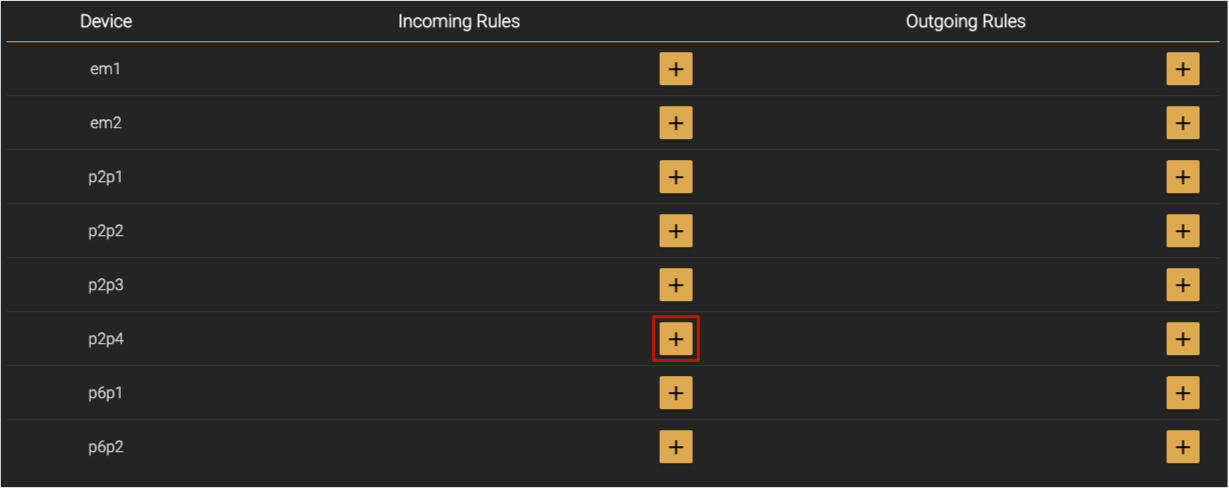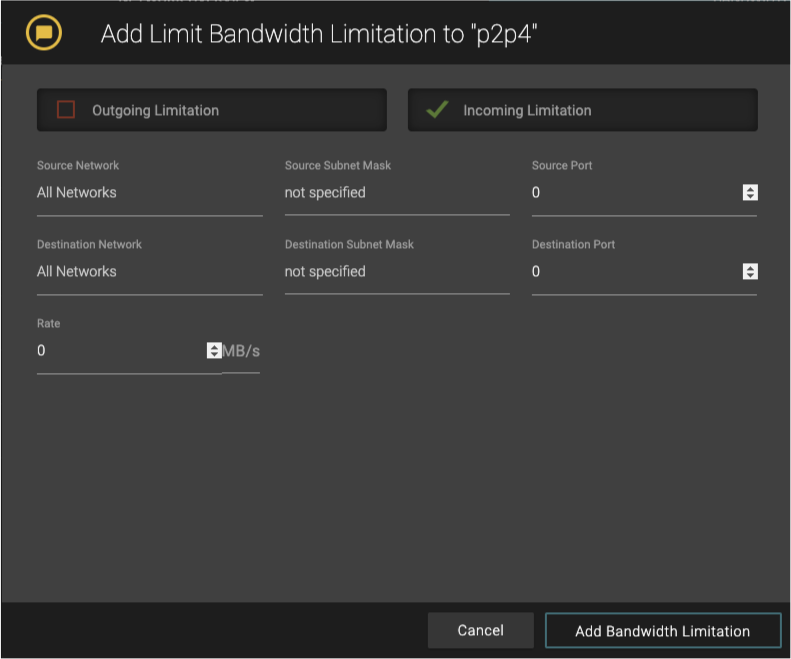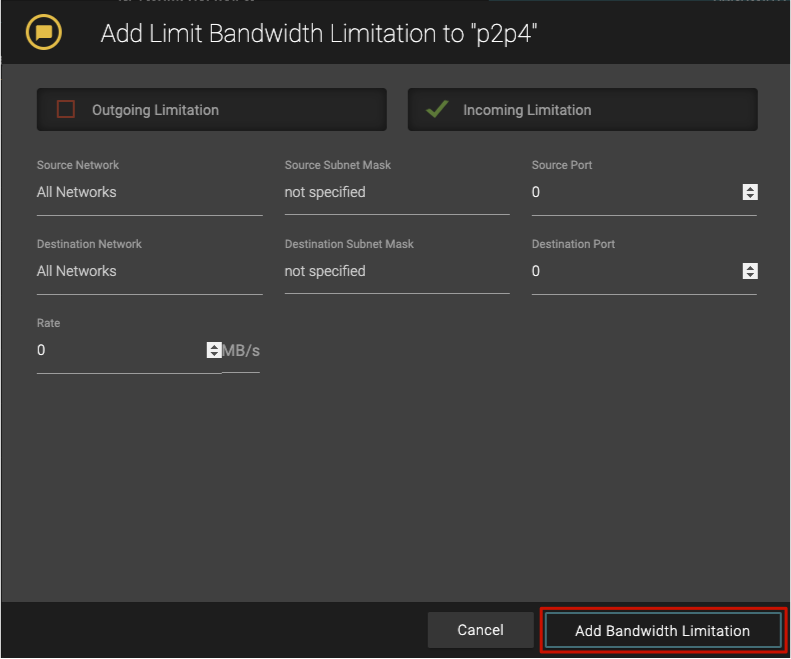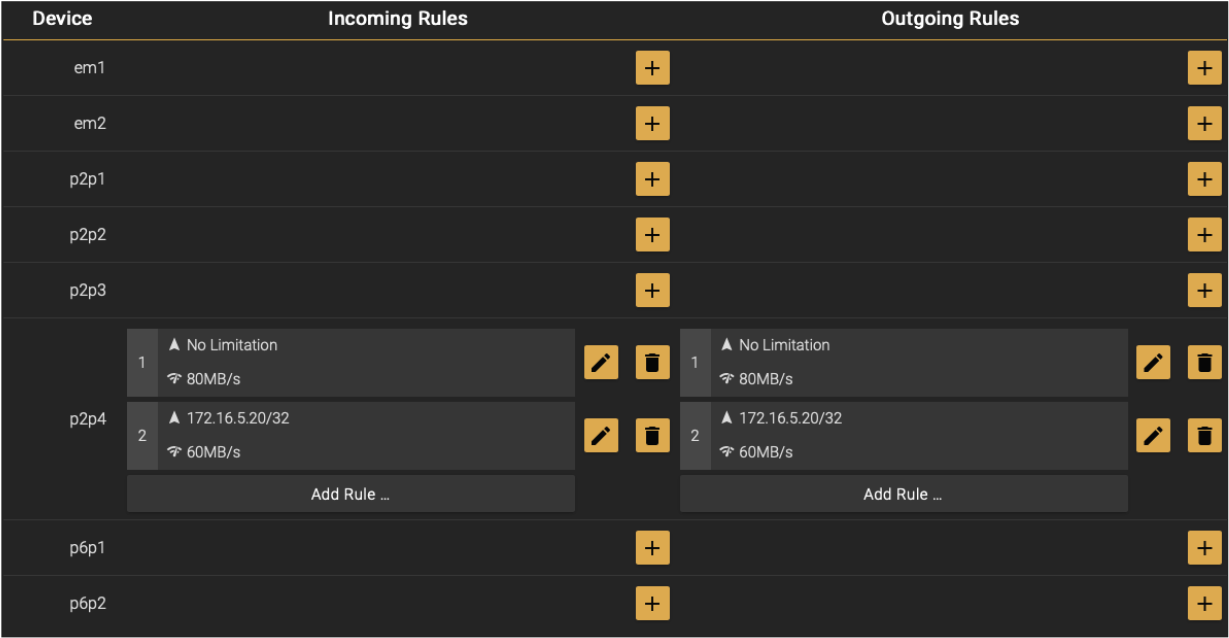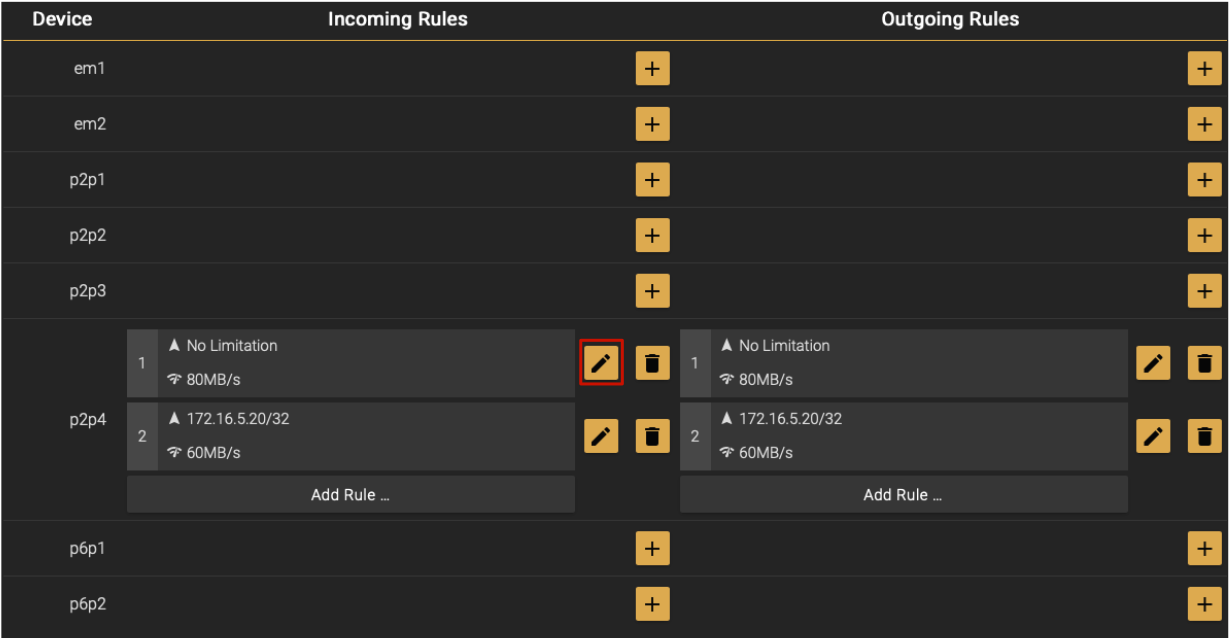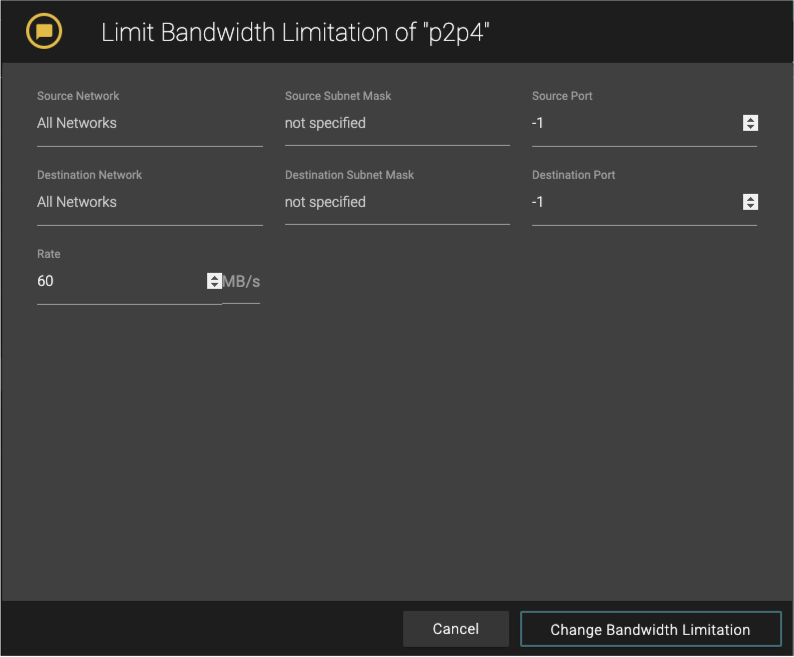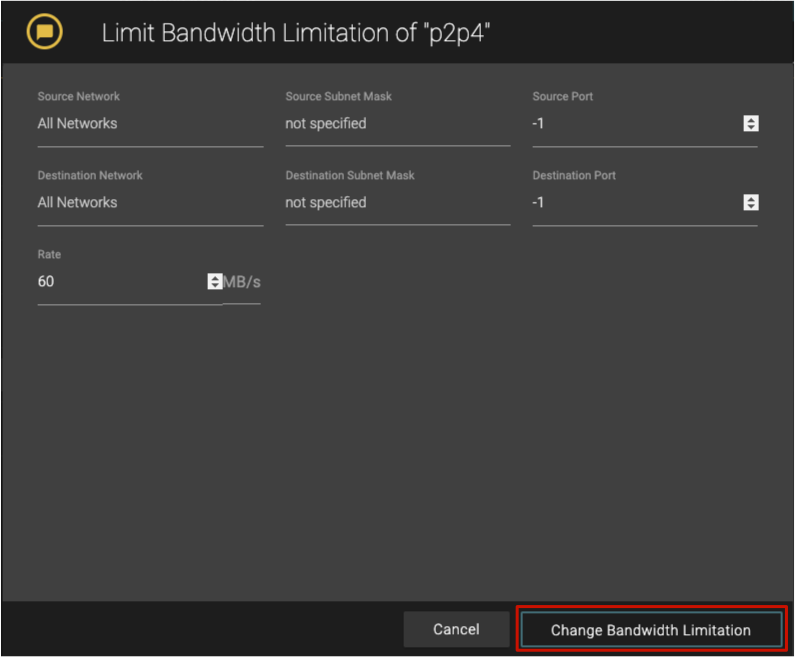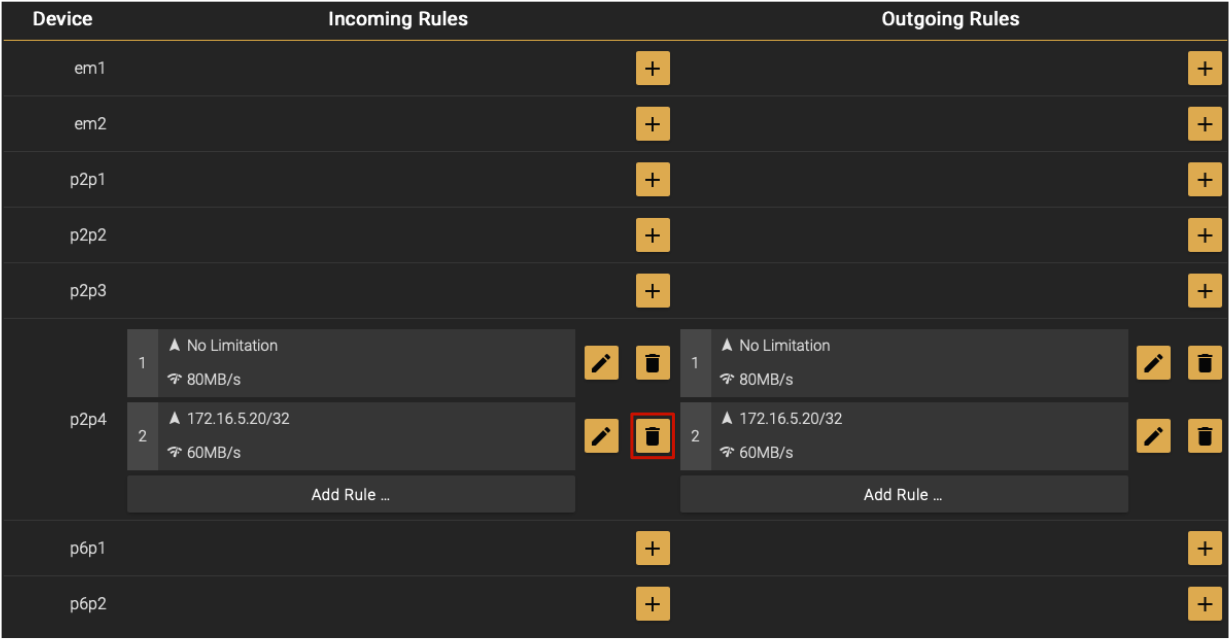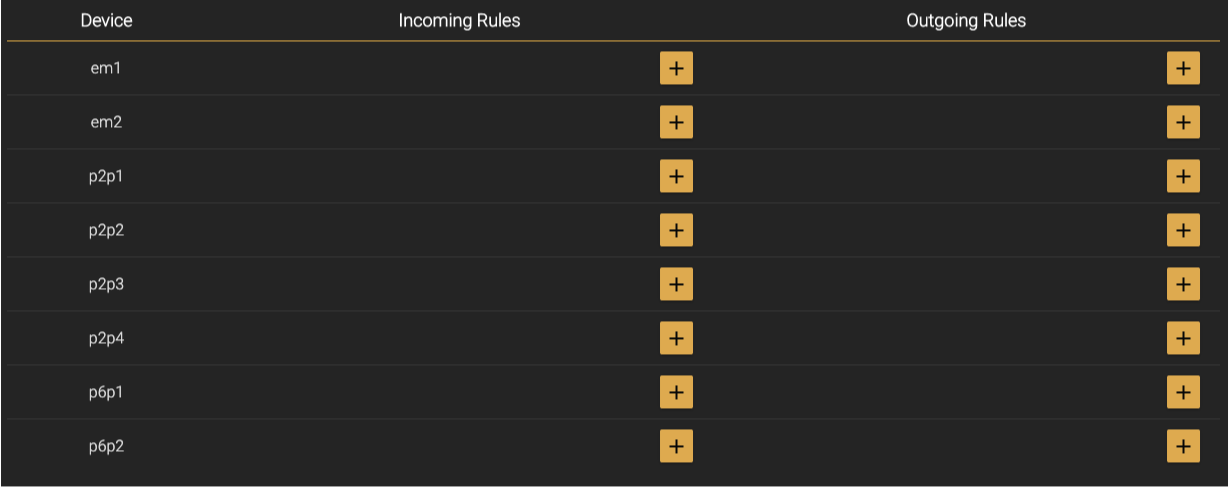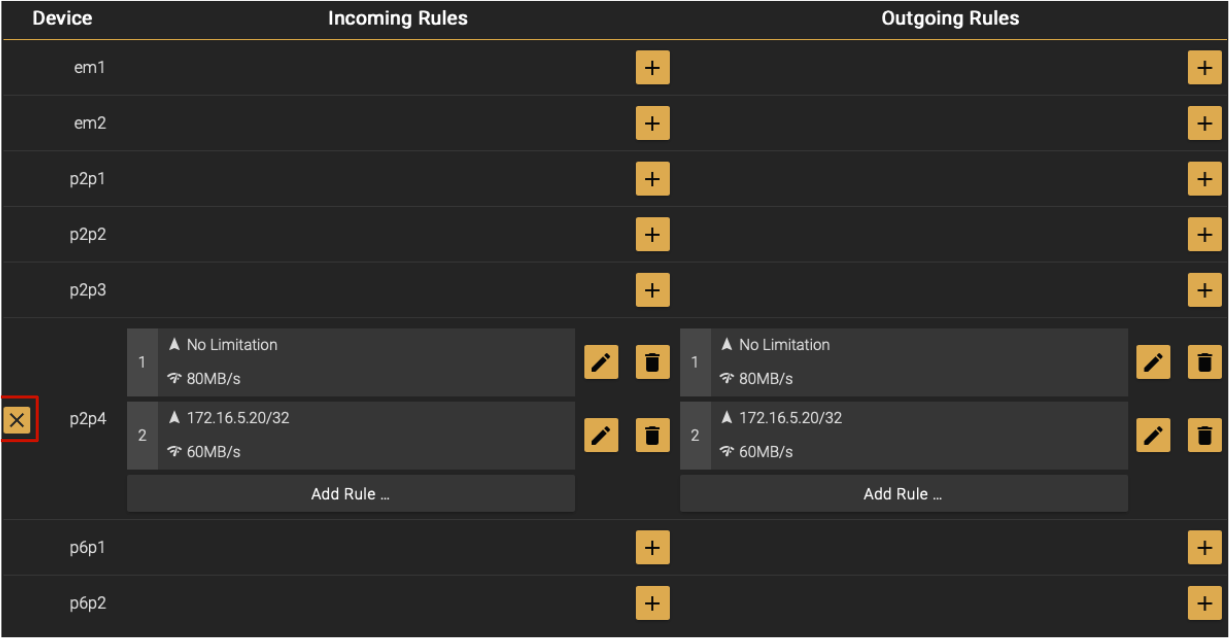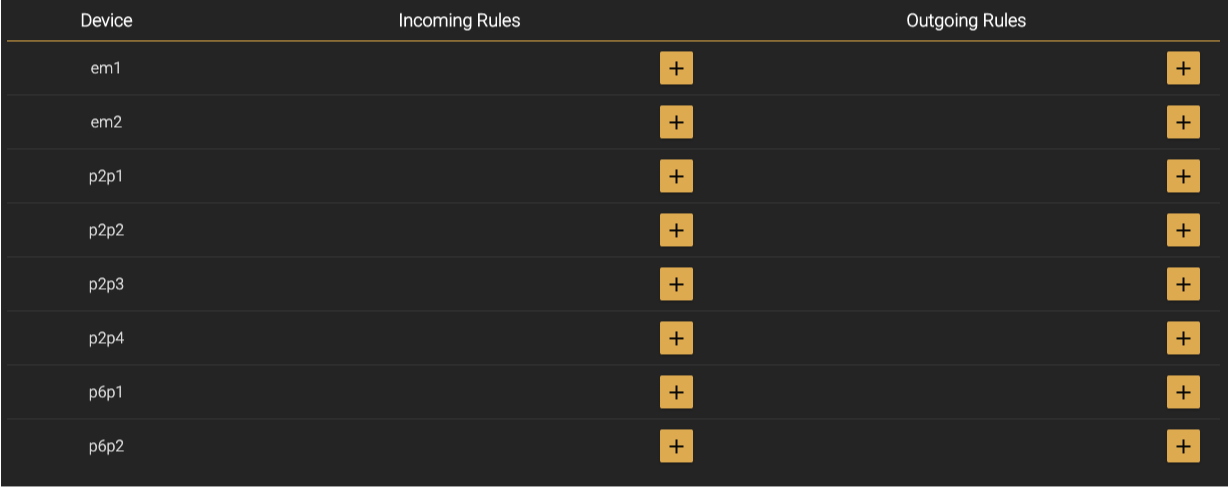...
In case the desired team is not shown, press the Show all Connections button below the network interfaces list.
Press the Edit button of the desired team.
Configure the network settings accordingly to your needs.
Press the Save Changes button to take over your changes.
Bandwidth Limitation
Due to the fact that the RAID controller and the SAS-Disks will have a maximum speed, we will then be able to manually set the throughput to the clients. The Bandwidth Limitation feature will help you to manage the maximal data throughput for each workstation or a complete subnet. We will limit the speed limitation immediately after applying the configuration. Therefore, the performance can increase in the short term to the maximum available bandwidth, and therefore problems at that time slot can happen.
Regarding the combination of system performance profiles with Bandwidth Limitation, the activated profile will handle the priority of the I/O operations and the Bandwidth Limitation will only affect the maximum available bandwidth for either a workstation or a subnet. Therefore, the network Bandwidth Limitation limits only the throughput of the client or subnet and won’t change the settings of the performance profiles. So if you have activated the Playout profile and configured a bandwidth limitation the effect would be due to that the amount of data is still the same and minor throughput, it will take longer. The write operations from another client would then not be affected (if the configured limitation are not involving the client with write operations).
For understanding this feature in more detail we prepared examples for you.
Example: Connection over Switch/Router
...
So in this case we have a “Connection over Switch/Router“ with one just:in linux (172.16.6.22), two edit workstations (172.16.6.20 & 172.16.6.21), and a just:play (172.16.6.19). All these “clients“ are connected through a 10 Gbit switch which is connected over a 10 Gbit connection to the just:store. So we will have a total bandwidth of 10 Gbit for all those clients and to avoid that some clients (which only need 50MB/s) will have equal bandwidth we will set Bandwidth Limitation rules as below:
172.16.6.19 will have a maximum bandwidth of 25MB/s for incoming and outgoing connections.
172.16.6.20 will have a maximum bandwidth of 200MB/s for incoming and outgoing connections.
172.16.6.21 will have a maximum bandwidth of 25MB/s for incoming and outgoing connections.
172.16.6.22 will have a maximum bandwidth of 500MB/s for incoming and outgoing connections.
Example: Direct Connection
...
So in this case we have multiple “Direct Connections“ with edit workstations (like Avid Media Composer, Adobe Premiere Pro, Final Cut Pro X, or Davinci Resolve Studio). All these “edit workstations“ are connected directly through a 10 Gbit connection to the just:store. So we will have a total bandwidth of 10 Gbit for each of those clients and to avoid that some clients (which only need ~120MB/s) will have the same amount of data throughput ( and won’t need that amount) we will set Bandwidth Limitation rules as below:
172.16.1.20 will have a maximum bandwidth of 200MB/s for incoming and outgoing connections.
172.16.2.20 will have a maximum bandwidth of 120MB/s for incoming and outgoing connections.
172.16.3.20 will have a maximum bandwidth of 120MB/s for incoming and outgoing connections.
172.16.4.20 will have a maximum bandwidth of 200MB/s for incoming and outgoing connections.
172.16.5.20 will have a maximum bandwidth of 200MB/s for incoming and outgoing connections.
172.16.6.20 will have a maximum bandwidth of 200MB/s for incoming and outgoing connections.
Bandwidth Limitation Overview
...
To see the Bandwidth Limitations press the tab “BANDWIDTH LIMITATION“ as you can see above.
...
Device: shows the device for the limitation rule.
Incoming/Outgoing Rules: displays the destination and rate of the limitation rule.
Adding a Limitation Rule
Press the plus button to add a new limitation rule.
Choose wheter this is an incoming, outgoing or both-directions rule. The bandwidth limitation options are explained below.
Press the Add Bandwidth Limitation button when you’re done.
The rule should now be reflected in the overview.
| Info |
|---|
Get more info about a rule by hovering above it with the mouse. On mobile devices, tap a rule once. |
Bandwidth Limitation Rule Options
Source Network: the IP address of the source (optional). This is required if you use multiple connections on a device.
Source Subnet Mask: enter the subnet mask of the source (optional).
Source Port: set the port for an specific application. Use “0” if you do not want to specify a specific port.
Destination Network: the IP address of the destination (optional). This is required if you use multiple connections on a device.
Destination Subnet Mask: the subnet mask of the destination (optional).
Destination Port: set the port for an specific application. Use “0” if you do not want to specify a specific port.
Rate: set the maximum rate of the interface in MB/s.
Changing a Bandwidth Limitation
Press the Edit button
Edit the bandwidth limit to your needs. The bandwidth limitation options are explained above.
Press the Change Bandwidth Limitation button when you’re done.
The changes should now be reflected in the overview.
| Info |
|---|
Get more info about a rule by hovering above it with the mouse. On mobile devices, tap a rule once. |
Deleting a Bandwidth Limitation
| Info |
|---|
Deleting a rule in the column Incoming Rules will only delete this specific rule. The same is true for Outgoing Rules. |
Press the Delete button on the rule your want to remove.
Confirm the dialog if you are sure. The deletion cannot be undone.
The changes should now be reflected in the overview.
Deleting all Bandwidth Limitations of an Interface
Hover above the name of the interface of which you want to delete all limitations. On mobile devices, single tap on the name of the desired interface.
Press the X button on the very left.
Confirm the dialog if you are sure. The deletion cannot be undone.
The changes should now be reflected in the overview.
...
Refer to chapter Bandwidth Limitation (just:store v4.0).
Bonding
Refer to chapter Bond and Team Options (just:store v4.0).


